Beauty Tips, Latest News, Nadine Artemis (Living Libations)
Seeing Spots – Super Heroes for Hyperpigmented Skin
I receive more questions about dotted, spotted, dappled, and muddled skin than any other health and beauty concern.
Why are people seeing so many spots?
Our skin is the sentinel of our health, and there are myriad of reasons why the skin develops spots, unusual freckling, and muddy discoloration referred to as hyperpigmentation. There are a few medical causes for hyper-pigmentation that require a doctor’s diagnosis and care:
- haemachromatosis, too much iron circulating in the blood stream, can cause a bronzy skin pigmentation
- congenital diseases such as Peutz–Jeghers
- Cushing’s and Addisons’s diseases, as well as other hormonal issues, can cause diffuse dappling pigmentation
- cancerous lesions
- mercury poisoning
Also, some prescription medications and topicals make the skin more sensitive to ultraviolet rays and environmental exposures. If you are taking a medication and see changes in your skin, tell your doctor or pharmacist. Here are a few types of prescription drugs that may affect the skin: antibiotics, anti-seizure, diuretics, dyes, retinoid, aspirin, salicylic acid, non-steroidal anti-inflammatories, heart medicines, antiemtetics, antidepressants, contraceptive pills and cancer treatments.
Usually, though, skin spots and muddling are considered “benign” hyperpigmentation that can be faded and prevented without the care of a doctor.
Spot ID
Everyone knows what freckles are, and I think they are quite lovely sprinkled across the nose and cheeks of a face kissed by the sun. Freckles are areas where the skin pigment, melanin, has accumulated. Melanin is produced by cells called melanocytes as the skin’s natural response to time in the sun. They are most commonly found on fair skin and tend to fade in the winter.
Melasma,derived from the Greek word “melas” which means black, is irregular, muddy looking patches usually found on the face, especially across the upper lip and forehead. Women tend to develop melisma more than men, who represent only 10% melasma cases to dermatologists. Elevated estrogen and hormone imbalance is a major contributor to this melasma. Excess hormones usually occur from over production, toxin stimulation, and inefficiency in the natural hormone elimination process performed by the liver. The American Academy of Dermatology states that The Pill and HRT can cause melasma’s muddy looking pigmentation and sensitivity to sun. Hormones stimulate the growth of cells that make brown pigment (melanocytes), and natural light stimulates the production of even more brown pigment (melanin). Thyroid dysfunction can also lead to hormone imbalances that affect the skin.

To prevent melasma from occurring, worsening or reoccurring, it is important to ditch The Pill and all artificial hormones, if possible, and keep hormones in balance. If you are in your 40’s and 50’s and your hormones are fluctuating, consider supplementing with hormone harmonizing herbs such as wild yam, evening primrose oil, vitex, partridge berry, and passion flower.
Pregnancy is the exception. When melasma occurs during pregnancy it is commonly referred to as “pregnancy mask.” While this is a hormone issue, pregnancy mask is considered normal. Dietary changes and gentle skin care may help to prevent pregnancy pigmentation.
Post inflammatory hyperpigmentation,or PIH, is a darker or blotchy patch that remains after a skin trauma or disease has resolved, such as rashes, contact dermatitis, burns, allergic responses, injury, acne, and infections. PIH is caused when the inflammation process alters the function of the immune cells and the melanocytes in the injured cells so that excess melanin is dispersed. Ethnic, Asian, and darker skins are more prone to PIH, and may experience hyperpigmentation from some types of skin therapies, including facial peels, microdermabrasion, and laser. In time, with healthy cell turnover, PIH spots will fade on their own.
Similar in appearance to a freckle, age spots or liver spots are flat and brown or blackish and generally they larger than a freckle. These spots are most often on the face, arms, hands, chest and back. Dermatologists largely consider age spots a cosmetic issue that occurs as part of the natural aging process, though medical researchers may now be establishing that these spots are a skin-surface indicator of a deeper issue called lipofuscin accumulation. Lipofuscin is a type of cellular waste that causes metabolic damage in the cell and slowly drains away cellular vitality. It is composed of brown pigment, oxidized proteins, lipids, and metals: iron, copper, zinc, aluminum, and manganese. Lipofuscin is also found in the liver, kidneys, heart, nerve cells, brain, and adrenal glands where it fuels a cascade of what are considered to be age-related disease and health issues. If you have age or liver spots, it may mean that lipofuscin is also accumulating in other organs.
Age spots are often confused with, or used synonymously for, solar lentigine (lentigo), which are accumulations of melanocytes (in lieu of melanin as with freckles), in a small group of cells. Solar lentigines are most often found on Caucasians over 40 years old; this is attributed to lower production of skin-protective melanin combined with excessive sun exposure. Our skin is designed to be in the sun, and with unwise interaction our skin can be vulnerable to sunburn and repeated sunburns can cause damage. When skin feels warm, seek shade!
Please Don’t Take My Sunshine Away
Sunlight ripens fruit, guides the growth of trees, prompts petals to close at dusk and awake at dawn. Although we try to deny, the sun ignites the deep layers of our skin, our hormonal-secretions, and cells.
Our skin needs to be out in the sun. UV-B radiation received and absorbed by the skin activates myriad of health boosting bio-cycles including vitamin D3 and glutathione production. Our current sun-fear contributes to the soaring rate of vitamin D deficiency of over 75% of adults in North America. A lack of sunlight initiated D3 disturbs normal cell growth, and research attributes this to a host of health issues, including heart disease, osteoporosis, juvenile diabetes, MS, and cancer.
Glutathione is a goldmine for skin health; it regulates melanin synthesis, neutralizes free radicals and reactive oxygen species, and is required for DNA repair. It also contributes to protein production, and proteins are the building blocks of our body and skin. Glutathione supplements are widely available, though laboratory studies have concluded that dietary and supplementary glutathione has low bioavailability and little impact on circulating levels. You can make all the glutathione you need for the day in just a few minutes of afternoon sun to skin contact.
The sun is blamed for many skin issues including melasma, age spots, and premature aging, and it is important to interact wisely with our ancient accomplice. We do not want to be burned by the sun. Well-nourished skin has a healthier response to sun light, and most “age spots” and “photoaging” are the result of malnutrition not UV damage. The recipe for spots and wrinkles is our current standard diet of food grown in the shadows of pesticides and factory farming, rancid fats, cheap carbs and corn-syrup blended with toxins and tap water. Much of our food supply is deficient in skin-loving vitamins and minerals, and refined, processed foods trigger collagen breakdown, inflammation, and hyper-pigmentation.
Beautiful Food = Beautiful Skin
Dietary fat is vital whole body health and beautiful skin, and some fats are better than others. The fabulous fats in rich avocados, pasture raised meat and dairy, and organic olive and coconut oils support our cellular integrity and keep the skin soft and supple. Processed omega-6 polyunsaturated fats and trans-fats (soy, corn and canola oils), found in every processed food on the shelf, impair intercellular communication and suppress immune functions, which is associated with skin aging and hyperpigmentation. These oils are chemically unstable and oxidize readily to form free radicals that prevent flourishing health and are indicated for pre-mature aging; it pillages DNA, organs, blood vessels, immunity, and the skin.
Also, avoid wheat and sugar as if your beauty depends on it… because it does! Sugar and wheat gluten trigger a cascade of inflammatory responses in the body and skin, and inflammation contributes to hyperpigmenting and premature aging as well as a host of other health issues.
Colorful meals of whole foods, healthy fats, proteins, fruit and vegetables is the first step toward properly functioning melanocytes, reducing low level inflammation, and reverse oxidative damage. Be sure to get sufficient levels of the following skin-loving vitamins and minerals:
- Zinc contributes to hormone balance and repairs the skin.
- Omega-3 EFAs balance hormones, maintain cell membrane health, and youthful skin.
- Vitamin C is a powerhouse antioxidant to reduce oxidative damage.
- Vitamins B3 and B12 may your body lower inflammation and clear out the liposfucin hyperpigmentation.
- Vitamin E another powerful antioxidant has proven to slow the aging of skin cells and help diminish the appearance of scars.
- Curcuminiods found in warm yellow turmeric protection cells from oxidative stress
- Omega-3 fatty acids lowers inflammation and regulate cell health
- Polyphenols such as resveratrol in grapes, cranberries, blueberries and peanuts, help to reverse some DNA damage in the body and skin cells. ECGC in green tea is a good option, too.
- Indole 3 carbonyl found in cruciferous veggies helps the body clear excess estrogen that contributes to melasma. Avoid foods containing soy because it contains plant estrogen that simulate human estrogen.
- N-acetyl Cysteine (NAC) an amino-acid derivative boosts glutathione (GSH) helping the cells resist damage form reactive oxygen species (ROS).
There are also a few supplements that may help. Milkthistle and red clover are anti-oxidants and boost the efficiency of the liver’s action to clean the blood of waste and toxins. Antioxidants may reduce or eliminate the formation of lipofuscin. The amino acid acetyl L-carnitine has demonstrated in lab studies to reduce lipofuscin deposits; it works well in conjunction with B vitamins.
Botanical oils are a great adjunct for the skin. Add a drop to a capsule or a spoonful of honey the essential oils of peppermint, lemon, Greenland moss, carrot seed, or rosemary. If you prefer a premixed solution, Living Libations Zest the Best offers a whole garden in a single drop. Essences of cardamom, tarragon, cinnamon, oregano, mastic, lemon, savoury, carrot-seed, ginger, turmeric, coriander, schizandra, and rosemary-verbenone gently stimulate and get the juices flowing.
Spot Cleanse
“Out, damned spot! Out, I say!”
~ Macbeth, Shakespeare
Lady Macbeth had little success in removing her spot with severe scrubbing and neither will it help fade your skin spots. Harsh soaps, chemical cleansers, dermal laser ablation, and vigorous scrubbing strip the skin’s natural protective outer layer. With this protective layer jeopardized, toxins and environmental exposures irritate the underlying, young skin and induce inflammatory issues. Irritated, inflamed, and unprotected skin is more prone to pigmenting than intact, balanced skin.
Skin-sensitizing and damaging chemicals are found in all over the counter cosmetics, even the “gentle” cleansers and “natural” beauty products. So, toss the synthetic soaps, the lotions, and the miracle promising potions that may cause the very issues they claim to cure. When it comes to pigmentation, alcohol is one of the chief culprits. It dries and shrinks the cells and promotes free radical damage that contributes to skin spots and blotches. Avoid all products containing methanol and benzyl alcohol, isopropyl alcohol, SD alcohol 40, ethyl alcohol, ethanol, and denatured alcohol. Chemical concerns in cosmetics goes much deeper than this; read the rest of my top 10 list of undesirable ingredients in Deciphering Cosmetic Codes.
Transdermal Botanical Bouquet
We can feed our skin from the outside in with a transdermal botanical bouquet that will purify, calm, and clear the skin. Consider adopting the ancient gypsy method of washing the skin with oil.
Washing with botanical oils gently and effectively cleanses and exfoliates the skin while maintaining its precious top layer and its moisture. Plants evolved alongside our skin, and their oils harmonize with our skin. The botanical biotic properties of essential oils combined with the gentle dirt dissolving fatty oils lift away the daily accumulation of dirt and makeup while soothing and sealing the skin’s surface. Seabuckthorn Berry combined with jojoba oil is a beautiful way to wash the skin. Living Libations super critical extract is highly concentrated and regenerates the skin from the inside out. You can mix your own, or if you would rather someone else do the mixing, try Seabuckthorn Best Skin Ever for cleansing, exfoliating, and moisturizing all in one squirt.
Dermatology researchers are studying topical means of fading melasma and other forms of pigmentation and without much success. In February 2014, a study published in the Journal of the Academy of American Dermatologists reported, “Multiple treatments exist for melasma; they are often substandard and associated with side effects.”
Nature generously provides us a few skin-clearing solutions. Rich in antioxidants and skin regenerating energy, essential oils are super heroes for hyper-pigmented skin. Applied to the skin, the essential oils of sandalwood, geranium, frankincense, carrot seed, lavender, cape chamomile and rose oils (or DewDab and Soothsayer Serum) are especially effective at improving the appearance of hyperpigmentation. (A drop of frankincense might have helped to fade the spot on Lady Macbeth’s conscience, too.) Kiwi seed essential oil also has shown effective at fading spots.
Bright orange Seabuckthorn oil contains about 70% linoleic acid and alpha-linolenic acids, and research has demonstrated that linoleic acid and alpha-linolenic acid applied topically lightens hyper-pigmentations. It can be applied undiluted to the skin, and it should be applied at night because the oil will temporarily turn your skin orange. Or, a drop of Living Libations Night Nectar combined with DewDab applied to the spot will not turn your skin orange and is still a potent source of those fatty acids along with the regenerating oils of immortelle, frankincense, and rose otto.
If your skin is prone to hyperpigmenting, it is best to avoid lemon, orange, mandarin, angelica, and bergamot essential oils, especially before sunning, because they may make the skin more sensitive.
A DIY solution of vitamin C may also fade spots and muddy or patchy skin: make a 25% L-ascorbic acid solution with pure water and apply it to the affected area, along with one to two drops of frankincense (or DewDab) daily for 16 weeks. Vitamin C is unstable when dissolved in water, so make a fresh batch of solution every day.
Post-inflammatory hyperpigmentation will eventually fade with time and the listed botanical oils may speed up the process. PIH may be easily prevented from the start with suitable wound and skin care. Helichrysum essential oil calms red skin and can be used undiluted without stinging. Lavender or German Chamomile applied undiluted will cool and soothe the skin. Frankincense is a soother, and peppermint essential oil acts like a tiny ice cube to reduce swelling.
We can step into lasting beauty by overlooking our skin’s spots and scars and standing in awe of the skin we are in. This is renegade beauty: liberating ourselves from skin-scrutiny, being benevolent with our bodies, and regaling in radiant health by nourishing every cell.
Nadine Artemis is author of Renegade Beauty: Reveal and Revive Your Natural Radianceand Holistic Dental Care: The Complete Guide to Healthy Teeth and Gums, a frequent commentator on health and beauty for media outlets, and her products have received rave reviews in the New York Times, the National Post, and the Hollywood Reporter.
Described by Alanis Morissette as “a true-sense visionary,” Nadine has formulated a stunning collection of rare and special botanical compounds. Her healing creations, along with her concept of Renegade Beauty, encourage effortlessness and inspire people to rethink conventional notions of beauty and wellness.
Meet Nadine Artemis



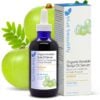

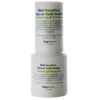

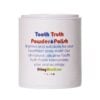
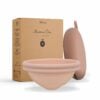
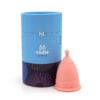
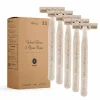
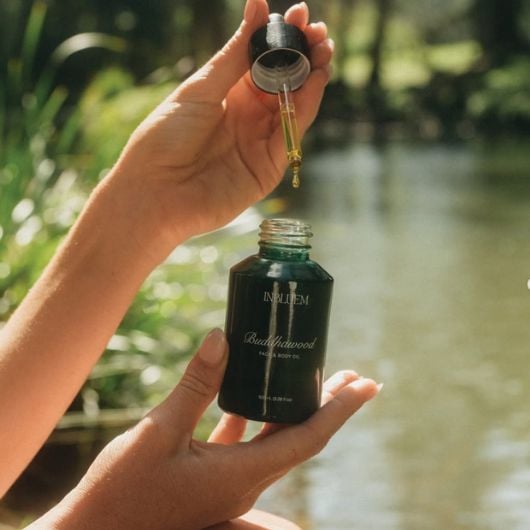












 Beauty Producten
Beauty Producten Merken van A-Z
Merken van A-Z Welzijn
Welzijn Gezondheid / Voeding
Gezondheid / Voeding